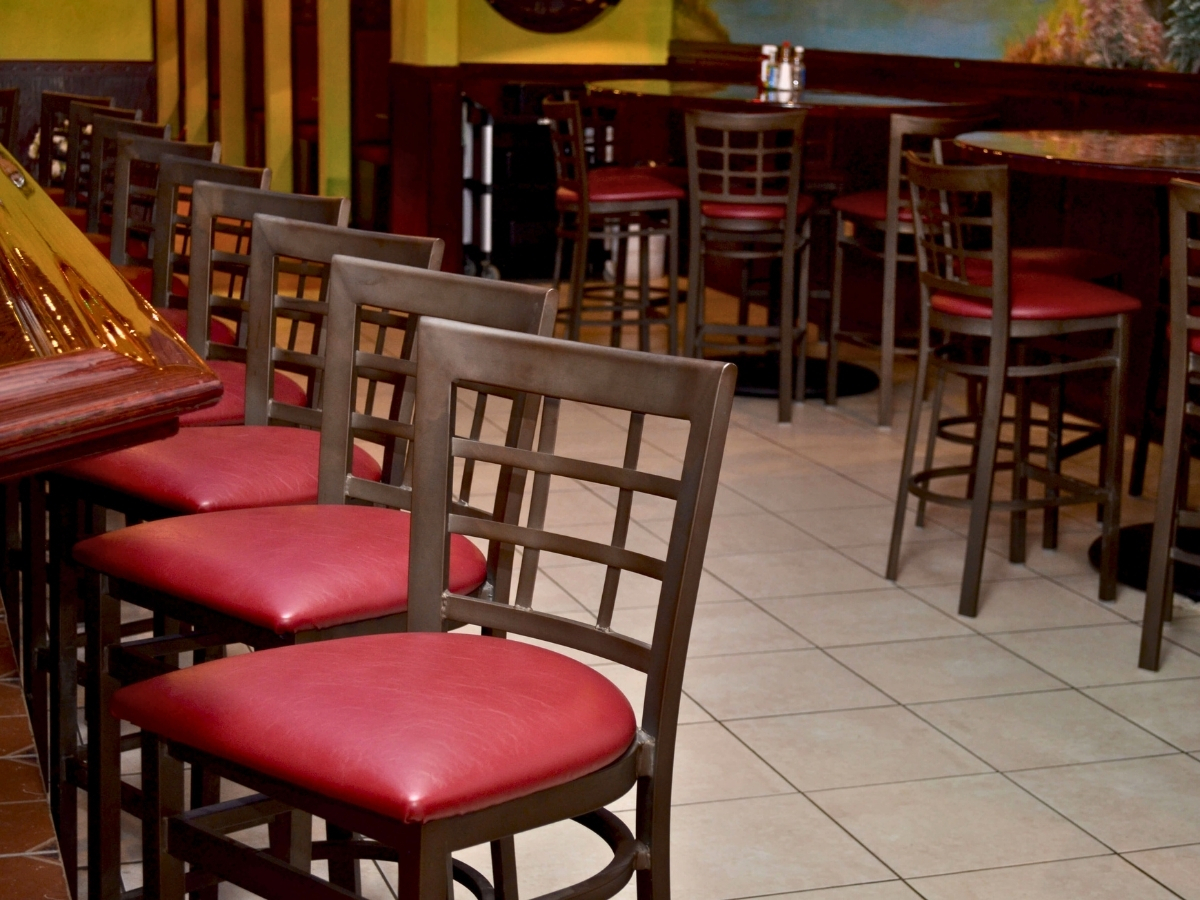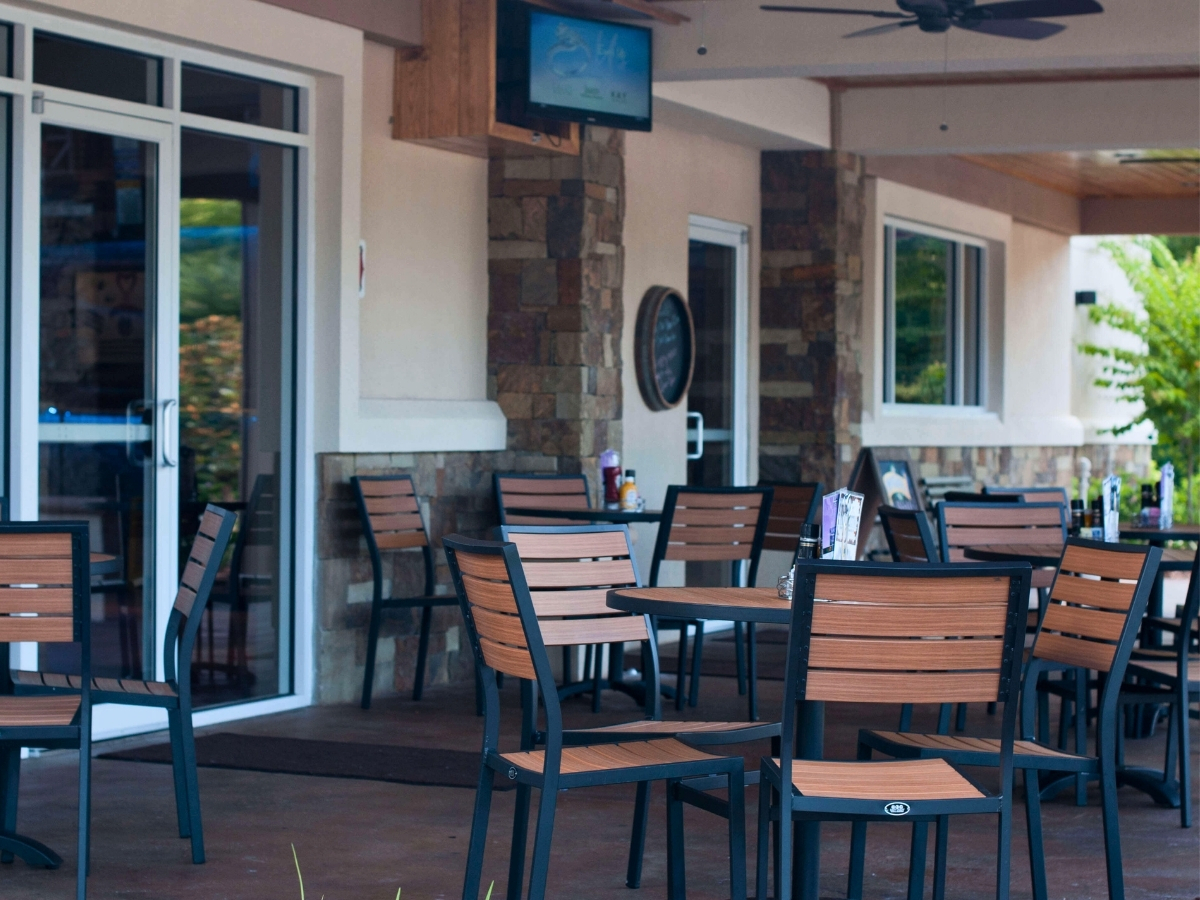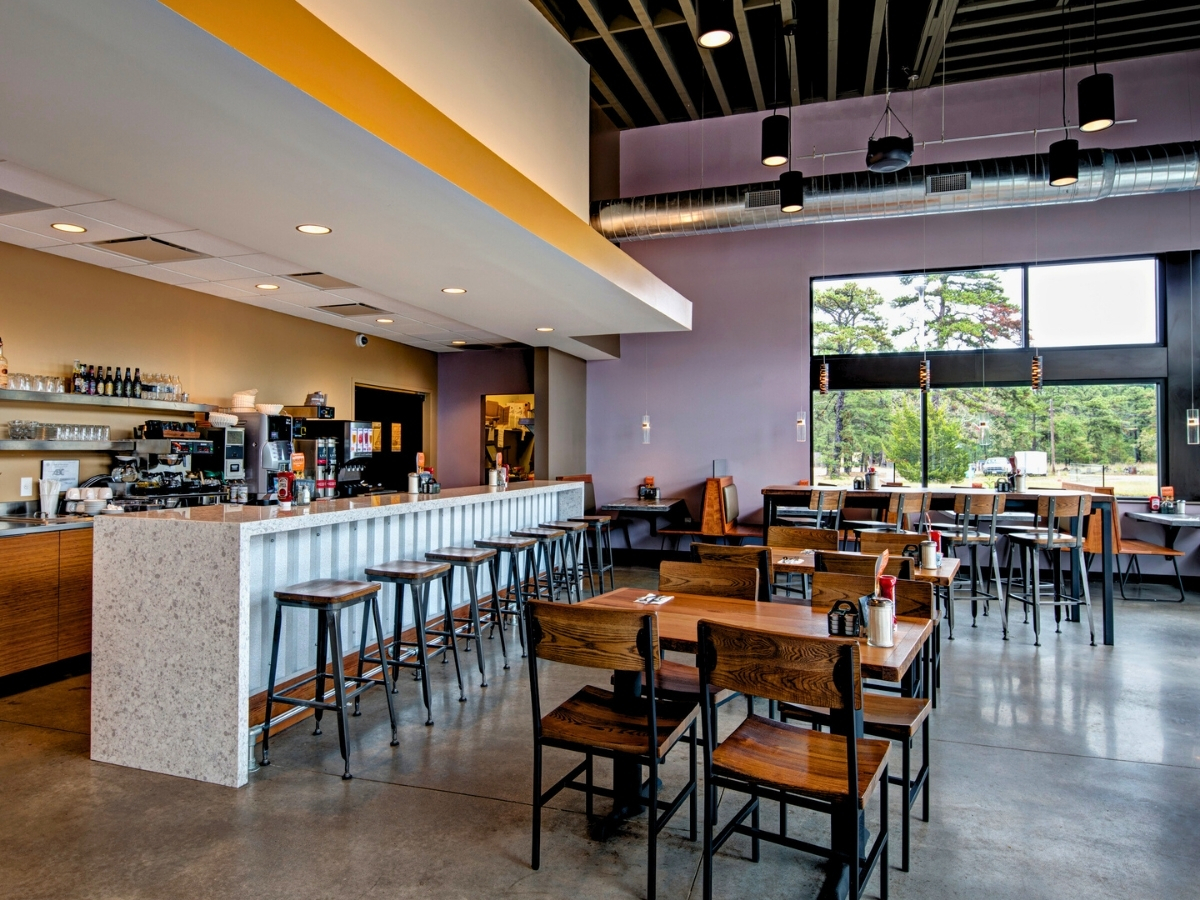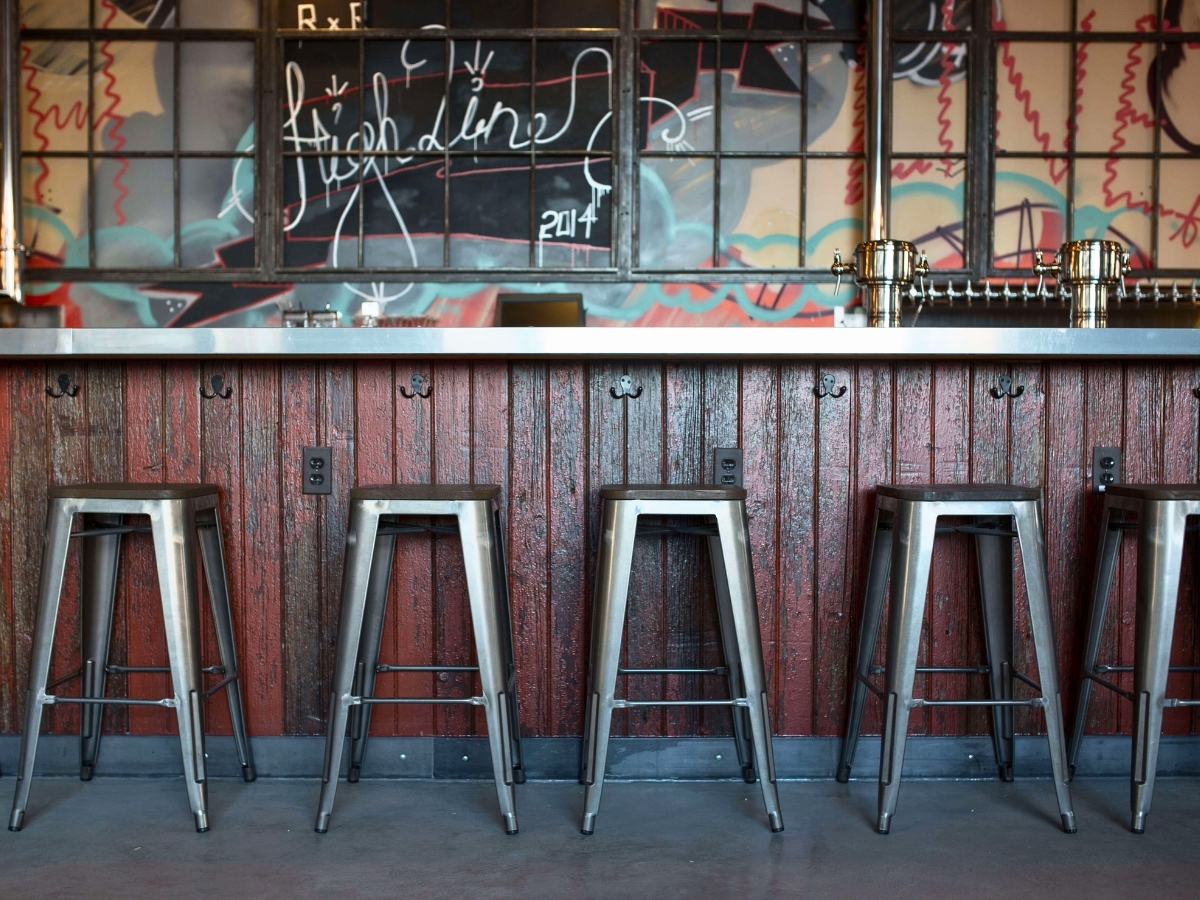If somebody had told you twenty years ago that, in 2018, restaurants would be lining up to serve their food on tables made from century old barnwood, you probably would have laughed and thought they were crazy. It’s true! Everything old is new again, and the trend toward modern rustic decors in the restaurant industry means that old reclaimed wood tables are more popular than ever. It’s kind of ironic when you think that restaurants, in their race to create the ultimate “Insta-worthy” moment for customers armed with tiny computers that weren’t even possible in the 20th century, are turning to the past for their inspiration.
You may or may not know this, but reclaimed wood isn’t the only way to get a weathered, rustic looking table. In fact, given the relative scarcity of reclaimed wood, and subsequent higher price, many restaurants are turning to distressed new wood to meet their needs. In this article, we’re going to talk about both types of wood tables, including what they are, the benefits of each, and when to choose one over the other.
What is Reclaimed Wood?
Reclaimed wood is old wood that has outlived its intended use – a barn, boat, flooring, wine barrel, etc – and is repurposed for some other use. Technically reclaimed wood doesn’t have to be old, but older wood is more highly sought after. Wood from “old growth” trees, such as those that were abundant in the 19th and early 20th centuries has a number of advantages over modern lumber; it is denser than new wood and less prone to warping.
What Are the Benefits of Reclaimed Wood
Character – Character is a word that is often thrown around when talking about reclaimed wood: most often as a euphemism for old and time worn. The rich colors and patinas that are the hallmark of reclaimed wood can only be had through constant weathering and aging. Even more, the old nail holes, knots, and natural imperfections of the wood itself add to the unique character of reclaimed wood.
History – Every restaurant has tables, but not every restaurant can say that their tables came from a salvaged barn erected in a field in Ohio in the late 1800’s. Reclaimed wood is not only prized for its utility, but also for its story. Even if you don’t know the exact origin of the wood in your table, the fact that it served a completely different purpose for the first half of its life is a worthy story in and of itself.
Uniqueness – No two reclaimed tables are exactly alike because no two reclaimed boards are exactly alike. Think about that for a moment…in today’s day and age of mass production, it’s still possible to own something that is uniquely yours. Each reclaimed piece in your restaurant will share the same benefits and characteristics, but no two will look the same. Even if your table is one hundred percent red oak from the same barn, each board will have weathered slightly different, and will have its own unique coloration, textures, and natural imperfections.
Resilience – What happens to wood in a barn? It gets banged up, scratched, and dented. Now quick, what happens to wood tables in a restaurant? They get banged up, scratched, and dented. The beauty of reclaimed wood lies in its imperfections. Unlike a brand new, perfectly stained wood table, reclaimed wood looks ok if it gets a little beat up. Now that’s not to say that we would encourage damaging your table on purpose, but it is nice to know that one little scratch or dent won’t completely mar the look, it will just add more character.
Environmentally Friendly – One of the biggest benefits of using reclaimed wood is that it reduces the number of new trees that are cut down to be used as building materials. It also reduces the harmful emissions that are created by logging equipment and the trucks used to transport the lumber to factories for processing. In addition, it keeps a perfectly reusable resource out of the landfill and gives the old wood a new life.
What is Distressed Wood?
Distressed wood is new wood that has been artificially distressed and/or weathered to make it appear old. Distressing techniques often include putting nail holes in the boards, creating circular saw marks to replicate vintage logging techniques, or adding a patina to the wood so that it looks like it has aged over decades of use.
What Are the Benefits of Distressed Wood
Consistency – If you need a consistent look throughout your restaurant, then distressed wood is the answer. While it isn’t mass produced, distressed wood boards tend to look similar in that the same distressing process is applied to all of them. They may have marks in different spots, but the overall color and pattern of wear is usually the same.
Price – Reclaimed wood is more expensive than distressed wood because it is labor intensive, and due to supply and demand pressures. As the demand for reclaimed wood has blown up in the past 5 years, the price has risen; there are only so many old barns available to reclaim. If you are looking for a rustic look without paying for reclaimed wood, then look at distressed wood.
Colors – Distressed wood can be stained to whatever color you want while keeping the characteristics of the wood, whereas reclaimed wood looks best in its natural color.
Should I Choose Reclaimed or Distressed Wood for My Restaurant Tables?
The answer to this is, as always, it depends. If you are looking for an authentic rustic look with a story behind it, then reclaimed wood is definitely the way to go. If, on the other hand, you’re budget conscious and just want consistently great tables that look vintage, then you can’t go wrong with a distressed wood table. Either way, your customers will start taking out their phones to snap away as soon as they enter the place.
If you need help figuring out what type of table would work best for your restaurant, give our customer care team a call at (800) 986-5352 and we’ll be happy to assist you.






